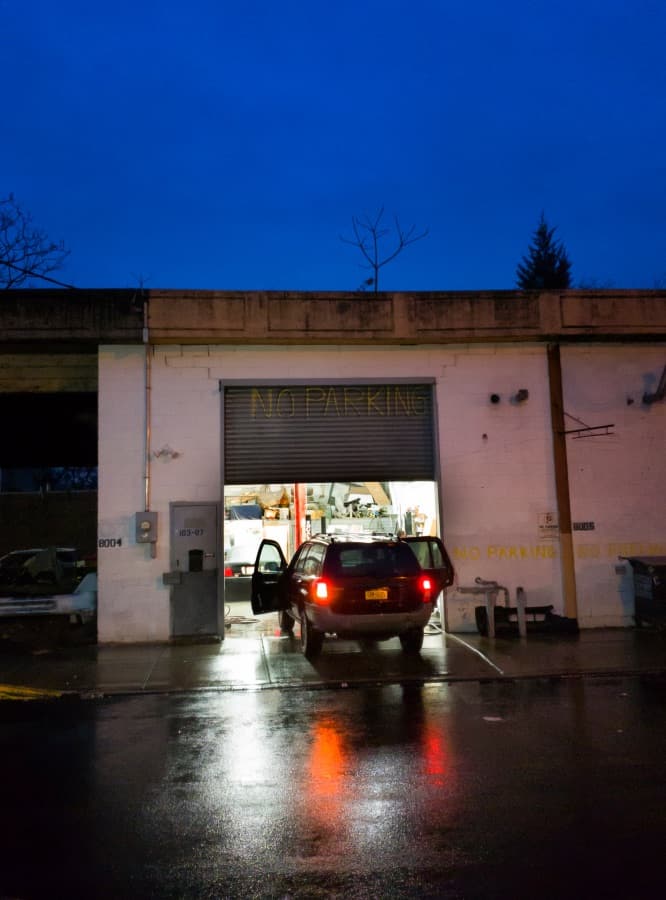
Above: 104St Station at dusk. All photos by Mark Lyndersay.
At this point in the development of smartphone photography, things are moving so fast that any evaluation of the capabilities of a device is a likely to become a footnote in the history of this phase of personal photography’s evolution.
Samsung’s Note9 is a fine example of the current state of the art for dual lens cameras.
The device ships with the standard medium-wide focal length lens that smartphone photographers are used to working with along with a second 58mm lens that doubles the reach of the device.

Hudson Boulevard Park 
Infinity House at Bryant Winter Park 
Garage at dusk, Queens 
Boston Commons
Above: Photographs shot in New York with the Note9. Click on any image to enlarge.
Or it would, if a user could access that second lens in any repeatable way.
Samsung uses the second lens exclusively for plenoptic effects, computed alterations that work with capture data to simulate traditional photo effects as well as to introduce capabilities that are unique to digital photography.
Some of these have been around for years, like High Dynamic Range imaging, Time Lapse and Panoramic images.
Others, like Live Focus, are newer and sometimes show how early they are in their development cycle. Live Focus on the Note 9 works well, showing considerable smarts in edge detection.
But the most critical measure of how well the Note9 functions as an image capture device is in the files it creates.
“The files I get off the Note9 aren’t as just good as the ones I get from a prosumer P&S I use regularly; they are often better.”
I use smartphones for photography the same way I use cameras. I expose with their limitations and strengths in mind, capture the best possible RAW data dump of their images wherever possible and then enhance for effect using an image editor.
So my default is the Pro mode, and I’ll ride settings, usually bringing sensitivity down and on the Note9, which has a dual aperture option, shifting to the wider aperture to compensate, because I always seem to be shooting in low light.
When it comes to today’s top of the line smartphones, there is no practical reason to be using a point and shoot camera anymore. You may need a camera for longer lens options or special features (I recently bought an Olympus TG-5 for full underwater shooting), but the files I get off the Note9 don’t just compare well with the ones I get from a prosumer P&S I use regularly; they are often better.
Since I tend to work close to my subjects and have a good sense about making the most of available light, it’s often a wash for me when it comes to which device to reach for.
There are many good reasons to own a Note9, but you can safely add one more to your checklist, “Replacing camera” is a viable, perhaps even a desirable option.

